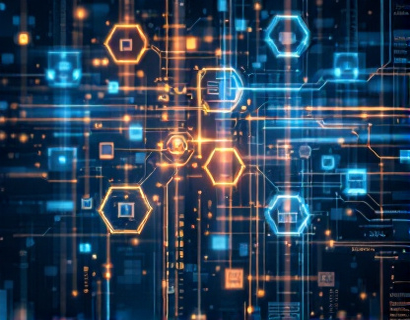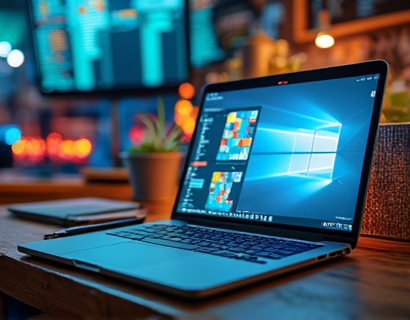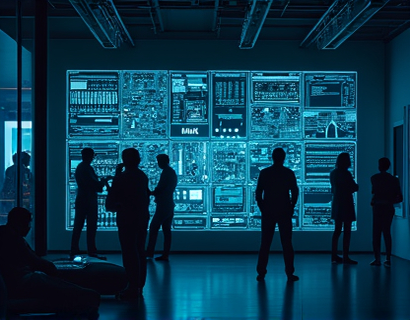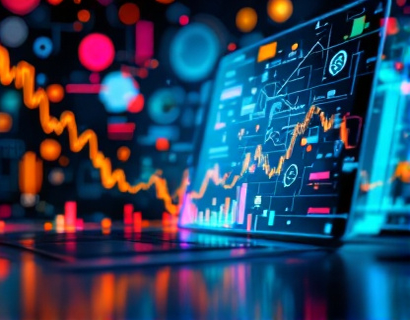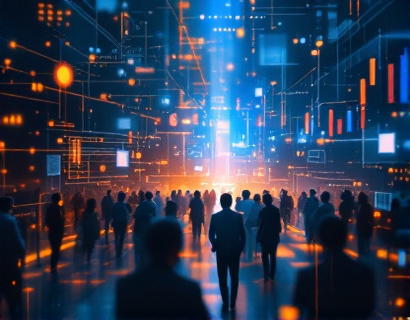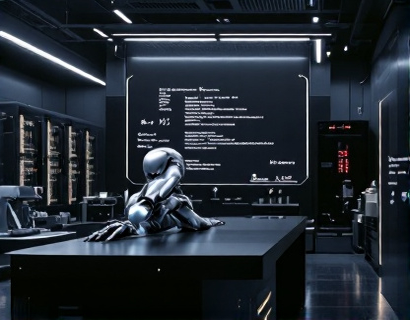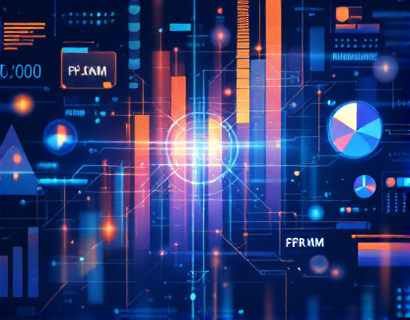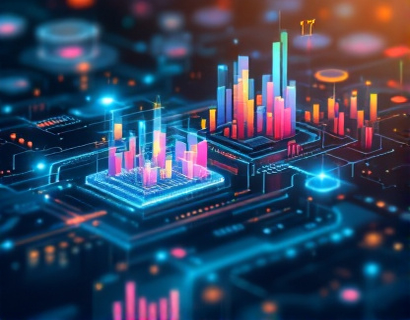Crypto and AI: Pioneering Digital Transformation and Enhanced User Engagement in the Ucosystem
The integration of blockchain technology and artificial intelligence (AI) is ushering in a new era of digital transformation, fundamentally altering how we interact with technology and each other. This synergy between crypto and AI is not just a technological curiosity but a powerful force driving innovation and enhancing user engagement across various sectors. As we delve into this topic, it's essential to understand the foundational elements of both blockchain and AI, and how their convergence is reshaping the digital landscape.
Blockchain technology, at its core, is a decentralized ledger that records transactions across multiple computers in such a way that the registered transactions cannot be altered retroactively. This inherent transparency and security make blockchain an ideal foundation for trustless systems where intermediaries are minimized or eliminated. On the other hand, AI, particularly machine learning, enables systems to learn from data, identify patterns, and make decisions with minimal human intervention. When combined, these technologies create a powerful toolset for building robust, secure, and intelligent systems.
Enhancing Security and Trust
One of the most significant benefits of integrating blockchain and AI is the enhancement of security and trust in digital interactions. Blockchain's immutable nature ensures that once data is recorded, it cannot be tampered with, providing a high level of data integrity. AI can further bolster this by detecting and mitigating anomalies in real-time, identifying potential security threats before they materialize. For instance, AI algorithms can analyze transaction patterns to spot unusual activities, such as fraudulent transactions, and alert the system to take corrective actions. This dual-layer security approach is crucial in an era where cyber threats are becoming increasingly sophisticated.
Moreover, the use of smart contracts on blockchain platforms, combined with AI-driven automation, can streamline complex processes. Smart contracts are self-executing contracts with the terms of the agreement directly written into code. AI can optimize these contracts by predicting outcomes based on historical data, ensuring that the conditions are met efficiently and accurately. This not only reduces the risk of human error but also speeds up transaction processing, making systems more reliable and efficient.
Personalization and User Engagement
In the realm of user engagement, the combination of blockchain and AI is revolutionizing how services are tailored to individual needs. AI algorithms can analyze vast amounts of user data to create highly personalized experiences. For example, in the context of digital content platforms, AI can recommend articles, videos, or products based on a user's browsing history and preferences. When this data is stored on a blockchain, it ensures that user privacy is maintained, as the data is encrypted and only accessible through secure, permissioned access.
Blockchain-based identity management systems, powered by AI, can further enhance user engagement by providing a seamless and secure way to manage digital identities. Users can control their personal data and decide who can access it, fostering a sense of ownership and trust. This is particularly important in industries like finance and healthcare, where sensitive information needs to be handled with the utmost care. By leveraging AI to manage and verify identities, these sectors can offer more personalized services while ensuring compliance with regulatory standards.
Decentralized Applications and Ecosystems
The rise of decentralized applications (dApps) is a testament to the transformative potential of blockchain and AI. dApps operate on blockchain networks and utilize AI to provide intelligent, user-centric functionalities. These applications can range from decentralized finance (DeFi) platforms to social media networks, all designed to operate without central authority. AI enhances these platforms by enabling features like automated trading, predictive analytics, and intelligent matching services.
For instance, in a decentralized marketplace, AI can optimize pricing and inventory management by analyzing market trends and user behavior. This not only improves the efficiency of the marketplace but also provides a better experience for users. The decentralized nature of these platforms ensures that no single entity has control, reducing the risk of censorship and increasing resilience against failures.
Data Ownership and Monetization
One of the most empowering aspects of the crypto and AI convergence is the shift in data ownership and monetization. Traditionally, users have had little control over their data, with companies collecting and selling user information without explicit consent. Blockchain and AI change this paradigm by giving users the tools to manage and monetize their data. Through blockchain, users can securely share their data with service providers, ensuring that they are compensated for their contributions. AI can then process this data to provide valuable insights and personalized services, creating a win-win situation.
For example, in the health sector, patients can use blockchain to securely share their medical records with healthcare providers, who can use AI to analyze this data for better diagnosis and treatment plans. Patients can be rewarded with cryptocurrency for their data contributions, incentivizing data sharing and improving the quality of healthcare services. This model not only enhances user engagement but also drives innovation by providing rich, diverse datasets for AI models to learn from.
Challenges and Considerations
While the integration of blockchain and AI offers numerous benefits, it also comes with its own set of challenges. One of the primary concerns is scalability. Blockchain networks, especially those using proof-of-work consensus mechanisms, can struggle with high transaction volumes, leading to slow processing times and high costs. AI, while powerful, requires significant computational resources, which can exacerbate these issues. However, advancements in blockchain technology, such as layer 2 solutions and proof-of-stake mechanisms, are addressing these scalability concerns.
Another challenge is the regulatory landscape. The intersection of crypto and AI operates in a relatively uncharted territory, with varying regulations across different jurisdictions. Ensuring compliance while innovating is a delicate balance. Organizations must stay informed about regulatory changes and work towards creating transparent, compliant solutions that build trust with users and stakeholders.
Future Prospects
Looking ahead, the future of crypto and AI is bright, with numerous opportunities for growth and innovation. As blockchain technology matures and becomes more efficient, its integration with AI will continue to unlock new possibilities. The development of interoperable blockchain networks will enable seamless interactions between different systems, fostering a more connected and intelligent digital ecosystem. AI advancements, particularly in areas like natural language processing and computer vision, will further enhance the capabilities of decentralized applications, making them more user-friendly and versatile.
Moreover, the rise of Web 3.0, a decentralized internet powered by blockchain, will play a crucial role in this evolution. Web 3.0 aims to give users greater control over their data and online experiences, with AI serving as the intelligent backbone that personalizes and optimizes these experiences. The convergence of these technologies will not only transform how we interact with digital services but also redefine the fundamental principles of the internet.
In conclusion, the integration of blockchain and AI is a game-changer in the digital landscape. It offers enhanced security, personalized user experiences, and new opportunities for data ownership and monetization. As tech enthusiasts and early adopters, embracing these technologies can lead to significant growth and engagement in the evolving tech ecosystem. By staying informed and adaptable, we can harness the full potential of this transformative synergy.



